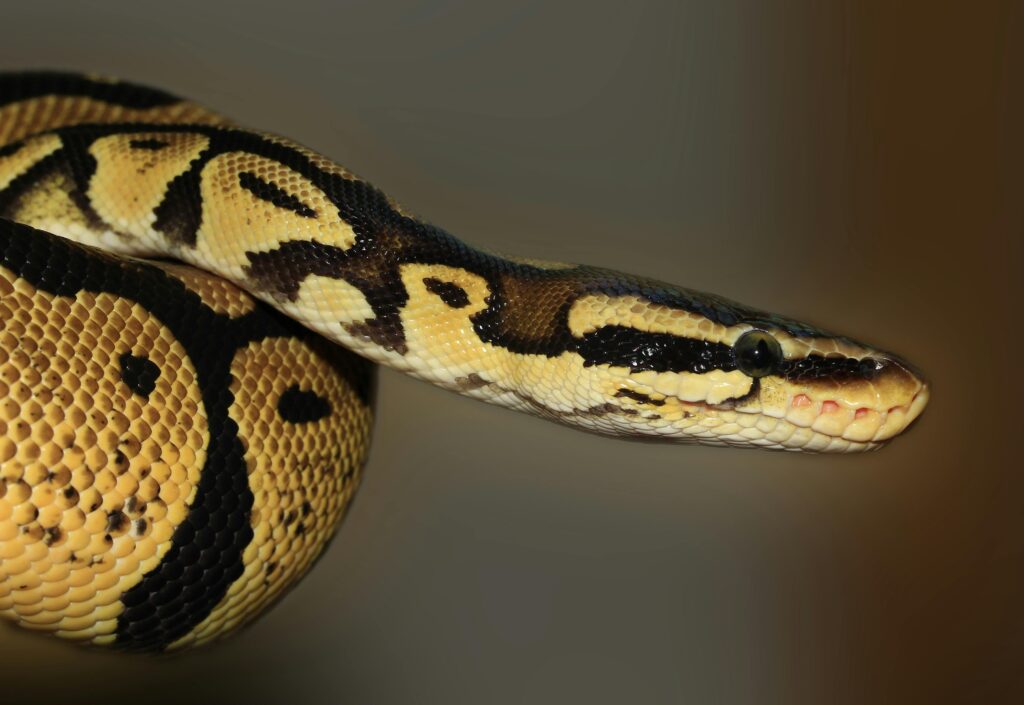Ball Python Care Guide
Published: February 6th , 2024

Housing
Substrate:
Utilize paper towel, newspaper, or repti-carpet as the cage lining. Avoid sand, gravel, or small particles to prevent ingestion and potential constipation.
Cages:
For a single adult ball python, a minimum 30-gallon aquarium is recommended, with a larger size preferred if possible. The cage’s length should ideally match that of the snake. Keep ball pythons separately, as they are solitary animals. Prevent escapes by securing a mesh screen on top of the aquarium.
Heating:
Maintain a thermal gradient with a hot and cold side in the cage. Hot side temperatures: 85-90°F; Cold side: 75°F. Use separate thermometers for accurate temperature monitoring. Avoid hot rocks, as they can cause burns.
Humidity:
Maintain ideal humidity levels of 60-70%. Establish a humid hide for shedding and hydration, using a container with sphagnum moss or paper towel. Ensure a small hole for snake access.
Hiding Area:
Provide dark hiding spots, such as wooden huts or commercially available hides. Include at least one hiding area on both the hot and cold sides.
Download the Caresheet |
Diet:
Food:
Feed juveniles weekly and adults every two weeks. Ensure prey size is no larger than the snake’s widest part. Only use stunned or pre-killed (frozen/thawed) prey to prevent injuries. Feed whole prey items. Avoid feeding during shedding. For nocturnal snakes like ball pythons, it’s recommended to feed in the lBall Python Care Guideate afternoon/evening.
Water:
Provide water in a shallow dish at all times. Ensure the bowl is sufficiently large for your ball python to fully fit in and easily get in and out. To enhance hydration and aid shedding, soak your ball python twice a week in warm shallow water for 10-15 minutes. Increase the frequency to once a day during shedding.
Healthcare:
Your ball python may conceal signs of illness, making regular veterinary check-ups crucial. Begin with a new patient exam, followed by yearly wellness examinations and fecal testing to detect early signs of sickness.
Weigh your ball python monthly using a kitchen gram scale or baby scale, depending on its size. Place the snake in a plastic container on the scale, preferably at the same time each day. If you observe a weight drop of 10% from its previous body weight, contact your veterinarian immediately.
Pay attention to gradual decreases in weight and promptly consult your veterinarian to discuss potential causes. If your ball python exhibits a decline in appetite, reduced droppings, difficulty shedding, or increased lethargy, contact your veterinarian for guidance. Early detection and intervention are crucial for your snake’s well-being.
Download the caresheet for Ball Python |

Recent Posts
- All Post
- care sheets
- guide
- Lizards
- snakes
- Uncategorized
- Back
- Mourning Gecko
- Sandfish skink
- Tegu
- Ackie Monitor lifespan
- Bearded dragon
- Blue Tongue Skink
- Crested Gecko
- Gargoyle Gecko
- Jackson's Chameleon
- Leopard Gecko
- Back
- Ball Python
- Black Rat Snake
- Corn Snake
- Gila Monster
- kenyan sand boa
- Milk Snake
- Back
- lizardscs
- snakescs



Address
215 Woodland Ave. Manchester, NH 03102




